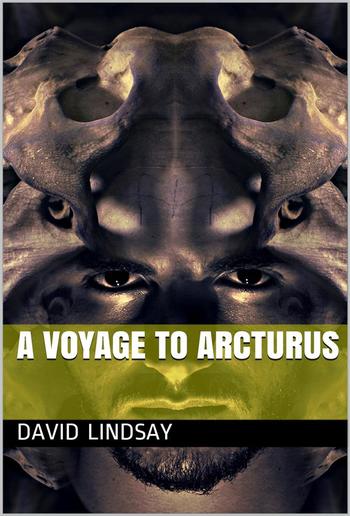
David Lindsay - A Voyage to Arcturus
A Voyage to Arcturus
David Lindsay
Description
A Voyage to Arcturus is a novel by the Scottish writer David Lindsay, first published in 1920. It combines fantasy, philosophy, and science fiction in an exploration of the nature of good and evil and their relationship with existence. Described by critic, novelist, and philosopher Colin Wilson as the "greatest novel of the twentieth century", it was a central influence on C. S. Lewis' Space Trilogy, and through him on J. R. R. Tolkien, who said he read the book "with avidity". Clive Barker called it "a masterpiece" and "an extraordinary work ... quite magnificent."
An interstellar voyage is the framework for a narrative of a journey through fantastic landscapes. The story is set at Tormance, an imaginary planet orbiting Arcturus, which in the novel (but not in reality) is a double star system, consisting of stars Branchspell and Alppain. The lands through which the characters travel represent philosophical systems or states of mind, through which the main character, Maskull, passes on his search for the meaning of life.
The book sold poorly during Lindsay's lifetime, but was republished in 1946 and many times thereafter. It has been translated into at least ten languages. Critics such as the novelist Michael Moorcock have noted that the book is unusual, but has been highly influential with its qualities of "commitment to the Absolute" and "God-questioning genius".
Maskull, a man longing for adventures, accepts an invitation from Krag, an acquaintance of his friend Nightspore, to travel to Tormance after a seance. The three set off in a crystal ship from an abandoned observatory in Scotland but Maskull awakens to find himself alone on Tormance. In every land he passes through he usually meets only one or two persons; these meetings often (though not always) end in the death of those he meets, either at his own hand or by that of another. He learns of his own impending death, meets Krag again, and dies shortly after learning that he is in fact Nightspore himself. The book concludes with a final revelation from Krag (who claims to be known on Earth as "Pain") to Nightspore about the origin of the Universe. The author turns out to support a variation of the doctrine of the Demiurge, somewhat similar to that propounded by some Gnostics.
All of the characters and lands are types used to convey the author's critique of several philosophical systems. On Tormance, most such viewpoints or ways of life are accompanied by corresponding new bodily sense organs or modifications of the same, thus each distinct Weltanschauung landscape has its corresponding sensorium.
The title suggests science fiction. It is not. Arcturus is a device, a metaphysical stage, arrived at through mediumship, not spacecraft. The book is a modern Pilgrim's Progress, a moral parable, a snare and, until the last few pages, a deception.
Lindsay was, at best, a pedestrian writer, incapable of conrete characterization. In Voyage, however, there are no persons in any ordinary sense after the first few pages. The characters are principles, points of view. The path of the protagonist is transformative and darkly revelatory.

